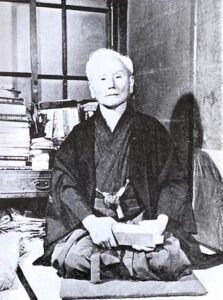
Gichin Funakoshi (1868-1957) was a renowned martial artist and the founder of Shotokan Karate, one of the most popular styles of karate today. He was born in Shuri, Okinawa, which was then an independent kingdom, and began his martial arts training at a young age under various Okinawan masters. He is often referred to as the “father of modern karate.”
Early Life
Gichin Funakoshi was born on November 10, 1868, in Shuri, Okinawa, which was then a separate kingdom known as the Ryukyu Kingdom. At a young age, Funakoshi began studying the local Okinawan martial arts styles, including Shōrei-ryū and Shōrin-ryū.
Teachers
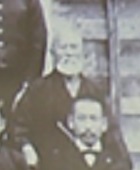
Funakoshi trained under several prominent karate masters. The most important teachers were Ankō Asato and Ankō Itosu. According to Funakoshi’s own account in his autobiography “Karate-Do: My Way of Life,” he trained under Matsumura Sōkon for several years. It is also said that Funakoshi trained under Arakaki Seishō. Itosu, in particular, had a significant influence on Funakoshi’s development as a martial artist and played a crucial role in the spread of karate in Okinawa.
The arrival of Gichin Funakoshi in mainland Japan
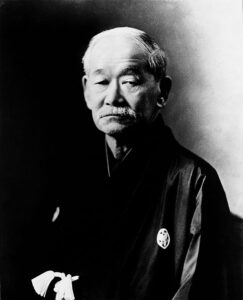
Jigoro Kano, the founder of modern judo and the Kodokan, invited Gichin Funakoshi to perform at the Kodokan in 1922. Kano recognized Funakoshi’s expertise in karate and believed that his demonstration would contribute to the exchange and development of martial arts in Japan. Alongside his friend Makoto Gima, Funakoshi performed at the Kodokan and left a lasting impression on the spectators, which further helped to promote the art of karate in Japan.
Funakoshi’s teaching
Funakoshi’s teachings emphasized the holistic nature of karate, encompassing physical techniques, mental discipline, and moral principles. He aimed to promote karate not just as a martial art but also as a means of personal growth and self-improvement.
The Shotokan Dojo
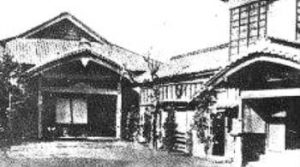
In 1936, the first official Shotokan Dojo was established in Mejiro, Tokyo. This training hall was dedicated to the practice and development of Shotokan Karate.
The Shotokan Dojo became a central location for training, research, and the dissemination of Funakoshi’s karate principles. It provided a space for practitioners to gather and learn under the guidance of experienced instructors. The dojo played a significant role in the development and popularization of Shotokan Karate.
Unfortunately, during World War II, the Shotokan Dojo, like many other buildings in Tokyo, where destroyed in an air raid in 1945.
The split between Shotokai and Shotokan
The split between Shotokai and Shotokan occurred after the passing of Gichin Funakoshi. The division arose due to differences in interpretations and approaches to practicing and teaching karate.
Following Funakoshi’s death in 1957, there was a disagreement among his senior students regarding the direction and emphasis of Shotokan Karate. Two main factions emerged, which eventually led to the formation of separate organizations: the Shotokai and the Japan Karate Association (JKA).
Shotokai
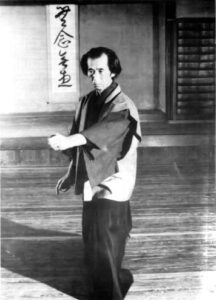
The Shotokai was initially established by Gichin Funakoshi himself during his lifetime. It aimed to preserve the traditional values and principles of Shotokan Karate and focused on karate as a means of personal development and character cultivation. The Shotokai placed a strong emphasis on the practice of kata, breathing exercises, the philosophical aspects of karate, and of course the non-competitive way of practicing karate.
Shotokan/Japan Karate Association (JKA)
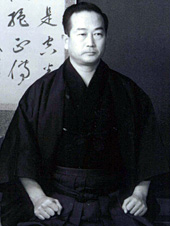
The Japan Karate Association (JKA) was founded by Funakoshi’s senior students, including Masatoshi Nakayama and Hidetaka Nishiyama, who were prominent figures in Shotokan Karate. The JKA sought to expand the popularity of karate and introduced more standardized training methods, including competitive aspects.
The split between Shotokai and JKA was primarily due to differences in training methodologies and philosophical approaches. Shotokai practitioners emphasized the non-competitive nature of karate and focused on the deeper aspects of the art, such as self-improvement and personal growth. On the other hand, JKA practitioners integrated more competitive elements into their training, including sparring and tournaments.
Both organizations have continued to develop and evolve independently, with their own training methods, certifications, and organizational structures. They have significantly influenced the spread and development of Shotokan Karate globally. It’s important to note that various other Shotokan organizations and schools exist worldwide, each with its own approach and interpretations of the style.
Writing and Philosophy
Funakoshi not only dedicated his life to the practice and teaching of karate but also to its philosophical aspects. He emphasized the importance of character development, humility, and self-discipline alongside physical training. Funakoshi’s principles were outlined in his writings, including his famous book “Karate-Do Kyohan,” which serves as a fundamental guide to Shotokan Karate.
Legacy
Gichin Funakoshi’s contributions to karate and the martial arts community are immeasurable. His efforts helped to popularize karate in Japan and eventually worldwide. Today, Shotokan Karate is practiced by millions of practitioners and remains one of the most influential and widely recognized karate styles.
Thanks for reading.
Gert
